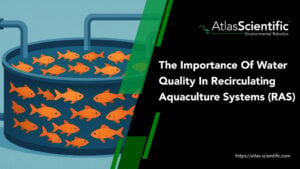

How to Build a Nutrient Film Technique (NFT) System in Hydroponics
To make an NFT hydroponic system, put together sloped grow channels, a reservoir, a water pump, and net cups. Add a nutrient solution and make
# Type at least 1 character to search # Hit enter to search or ESC to close

No products in the cart.

No products in the cart.
Product Categories

Hydrofluoric acid is an extremely versatile industrial chemical vital in semiconductors, manufacturing, fluorinated compounds, metal processing, glass etching, and petroleum refining. Although hydrofluoric acid is technically weak, it has unique penetrating properties and reactivity, making it a valuable acid across various industries.
Hydrofluoric acid (HF) is the aqueous form of hydrogen fluoride, which is a colorless, inorganic acid and corrosive solution that has remarkable chemical properties. Unlike most acids, hydrofluoric acid is considered a weak acid in terms of dissociation because it doesn’t completely ionize in water. Yet, this classification is deceptive, as hydrofluoric acid is extremely dangerous and highly reactive due to containing a fluoride ion.
At room temperature, hydrogen fluoride can exist in many forms:
What makes HF especially unique among acids is its ability to rapidly penetrate tissues and its strong reactivity with silicon compounds – HF is the most effective acid at breaking up strong silicon bonds to form silicon ions.

The distinctive chemical behaviour of HF also enables it to be used in many industrial applications; however, due to its properties, it is also a very hazardous acid.
In the agriculture industry, hydrofluoric acid is used as an essential precursor in producing fluorine-rich pesticides, herbicides, and insecticides. These fluorinated agricultural chemicals improve efficacy and stability compared to non-fluorinated chemicals.

It is important to note that HF is not directly applied to agricultural fields. It is the flourinated compounds that are derived from HF that helps farmers protect their crops from weeds and pests that could affect yields. It is believed that fluorine uptake, yield, and soil acidity is not affected by the use of HF, however, it may stimulate soil efficiency from rain and dew and excessive use could harm soils.
The pharmaceutical industry relies heavily on HF as a fundamental building block for fluorinated medicines. Hydrofluoric acid serves as the precursor to most flouride compounds used in pharmaceutical manufacturing, playing a key role in synthesizing many life-saving medications.

For example, hydrofluoric acid is used in for the production of Fluoxetine (commonly known as the brand Prozac), a widely prescribed antidepressant medication. The strategic incorporation of flouride atoms in drug molecules often enhances stability, efficacy, and bioavailability, a technique used in modern pharmaceutical development.
Aside from antidepressants, HF is also important in preparing antibiotics containing flouride such as ofloxacin and ciprofoxacin. The flourination process has become an important technique in drug development and discovery worldwide.
In the petrochemical industry, HF plays an essential role as a catalyst in alkylation processes, a key step in refining crude oil into high-octane gasoline. This application utilizes HF’s unique catalytic properties to create reactions that combine light olefins with isobutane, forming branched-chain hydrocarbons needed for premium fuels.

The alkylation process using HF greatly enhances crude oil yields and improves the quality of petroleum products. By using HF as a catalyst, refineries can produce gasoline with higher octane ratings while operating more efficiently and economically compared to alternative methods. This application is one of the largest industrial uses of HF, however, the petroleum industry has invested heavily in safety systems and containment protocols to reduce risks associated with handling large amounts of HF.
In the manufacturing process of fluorescent lighting, HF is heavily used, namely in producing the phosphor coatings that line the interior of flourescent tubes and compact fluorescent lamps. It is the phosphor that is responsible for converting UV light into visible light when the lamp is switched on.

Hydrofluoric acid is also used as a key component in etching and treating glass components in lighting products. The application of HF helps create the precise surface characteristics needed for optimal light dispersion and efficiency. As the lighting industry evolves toward more energy-efficient technologies, the manufacturing process of lighting involving HF continues to be refined to enhance product performance while limiting environmental impact.
As HF is extremely versatile, it makes it indispensable across many material manufacturing sectors.

The production of microchips and electronic components in semiconductors uses ultra-pure HF for many processes. Silicon wafer cleaning and preparation involves HF solutions to remove native oxide layers and create atomically clean surfaces before the subsequent processing steps. This thorough cleaning process is important for ensuring proper adhesion and electrical characteristics.

When circuit patterns are transferred onto silicon (photolithography), HF is a key chemical in wet etching that allows the creation of microscopic features with immense precision. The controlled dissolution of silicon dioxide by HF enables manufacturers to build the complex, multi-layered structures that form the foundation of modern computing devices.
Over the last century, electronic components are shrinking while growing in complexity, therefore, the role of HF in semiconductor fabrication has become increasingly advanced.
Measuring the pH of HF presents unique challenges because it is highly corrosive. Standard pH probes mostly use glass membranes, which contain silicon dioxide – a compound that HF readily attacks and dissolves. This means that conventional pH electrodes quickly deteriorate in hydrofluoric solutions, rendering measurements unreliable and causing safety hazards.
Industrial pH probes are specifically designed for HF applications – they use alternative protective coatings or alternative membrane materials to withstand HF exposure.

The concentration of HF significantly impacts pH readings and measurement challenges. At higher pH levels, most fluoride ions exist as non-corrosive free fluoride, making measurements easier. However, at low pH levels, these free fluoride ions convert to HF, creating a more corrosive solution that is more challenging to measure accurately.
For reliable pH monitoring in HF environments, facilities should maintain pH levels as high as practicable while still meeting process requirements. This not only improves measurement accuracy but also extends the lifespan of measurement equipment.
Specialized measuring equipment like the Atlas Scientific Industrial pH Probe Kit offers a reliable solution for measuring pH in challenging chemical environments. Our industrial-grade system provides users with crucial advantages when measuring pH in HF applications.
Unlike standard pH probes that are made from fragile glass components vulnerable to HF exposure, the Atlas Scientific Industrial pH Probe is constructed from Delrin – a strong and highly chemical-resistant thermoplastic. This construction is particularly important for HF applications, as HF’s extreme reactivity toward glass and moderate reactivity toward many metals demands plastic containment solutions.

The Atlas Scientific Industrial pH Probe’s innovative design replaces the traditional glass bulb with a flat sensing area, removing concerns about glass components breaking off into liquids – a key safety feature when working with hazardous substances such as HF. Additionally, the Atlas Scientific Industrial pH Probe incorporates a Teflon junction connecting it to the external environment, making it exceptionally well-suited for highly corrosive solutions and environments where other junction materials would rapidly degrade.
Handling HF requires strict safety precautions because of its unique properties. Unlike most other acids that cause immediate pain upon contact, hydrofluoric acid can take time to produce symptoms. Delayed treatment can lead to more severe injuries, therefore, proper health and safety procedures and exposure protocols must be followed.

Hydrofluoric acid poses several health hazards:
Industries working with HF should follow rigorous protocols such as:

Facilities must have clear decontamination procedures for work areas and equipment when handling hydrofluoric acid. All waste containing HF must be handled as hazardous material and disposed of correctly, following the appropriate regulations.

Should an individual come into contact with HF, you must:
From creating agriculture chemicals to creating the semiconductors powering our digital world, hydrofluoric acic (HF) is a remarkable chemical used throughout industrial processes while demanding exceptional respect for its hazards. Industries utilizing the powers of HF must weigh the benefits against the need for safety protocols, personnel training, and specialized equipment and monitoring tools such as industrial pH probes.

As industrial technologies continue to evolve, the applications for HF are expected to expand further, particularly in electronic manufacturing. This evolution will likely parallel advances in handling protocols and safety systems, as organizations and industries work to harness hydrofluoric acid’s capabilities while minimizing the risks.
If you would like to learn more about hydrofluoric acid or are interested in our Industrial pH Probe for your testing needs, do not hesitate to contact the world-class team at Atlas Scientific.

To make an NFT hydroponic system, put together sloped grow channels, a reservoir, a water pump, and net cups. Add a nutrient solution and make

Water quality is the driver of recirculating aquaculture system (RAS) success. Parameters like dissolved oxygen, temperature, pH, and nitrogen compounds critically impact fish growth and
Notifications